I bet that when you saw the title of this blog you all were thinking it will be about Queen Elizabeth I (1533−1603). Nope. I’m going to introduce you to Bessie Coleman, the first African American woman to obtain a pilot’s license and perform a public flight in the United States. She was known for performing daredevil aerial acrobatics and one of her nicknames was “Queen Bess.”
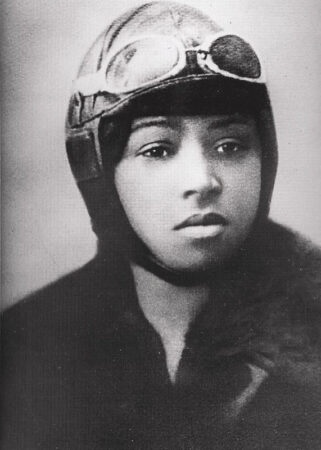
Eight years ago, I wrote a blog about another ground-breaking female aviator, Cornelia Fort (Killed in the Service of Her Country–click here to read the blog). Unfortunately, Bessie and Cornelia suffered the same fate seventeen years apart.
France Today has invited you to view the video of my 6 June 2024 presentation, DOUBLE CROSS.
It is the story of the successful deception by Allied double agents to fool Hitler into thinking the Normandy invasion was a diversion with the real invasion taking place elsewhere.
HOW TO VIEW THE FREE VIDEO
Members:
Click here to view.
Non-members:
Click here to view.
(viewing this video is free for 30-days)
FranceMedia Group publishes magazines, both in print and digitally, that cover various aspects of France. Their brands include France Today, Complete France, Bonjour Paris, French Entrée, Taste of France, France PropertyShop, and French Property.
Click here to visit the FranceMedia Group web-site.
Did You Know?
Did you know that it was an open “secret” that President Franklin D. Roosevelt’s health was failing at the time he announced he would run for an unprecedented fourth term? After returning from the Tehran Conference in November 1943, FDR began to cough violently and lost a lot of weight. He was constantly fatigued to the point that by D-Day (6 June 1944), the president was only working about four hours a day. One of FDR’s doctors, Frank Lahey, advised White House officials that President Roosevelt would not survive another term. (Lahey’s unpublished assessment memo would not be released to the public until sixty years after FDR’s death.)
Along with Churchill and Stalin, FDR attended the Yalta Conference on 4-11 February 1945 to negotiate a postwar peace. Two months later, Roosevelt was dead at the age of sixty-three. The vice-president, Harry S. Truman (1884−1972), was immediately sworn in.
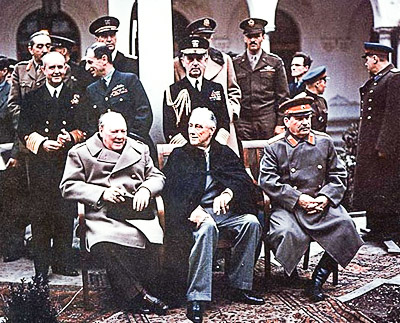
Along with his decision to run for the fourth term, Roosevelt decided to dump his third term vice-president, Henry Wallace (1888−1965). There were many qualified candidates (including the dark horse Truman) and FDR pretty much left the decision up to his advisors. After political considerations, the choice of a vice president hopefully boils down to their ability to govern in case the president is incapacitated or dies.
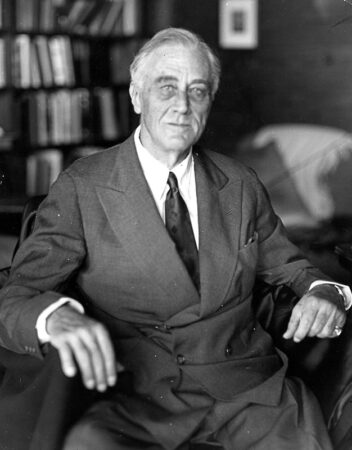
In 1944, the circumstances had a nuance that likely had not been encountered in the past. It was a forgone conclusion that FDR would win a fourth term but would not survive the four years. Therefore, the mindset of his advisors choosing a vice president came down to the knowledge that the choice of FDR’s running mate would be a de facto vote for the next president. Four months after being sworn in to his fourth term, Franklin D. Roosevelt died, and Harry Truman became president serving almost eight years in the White House. (He won the 1948 presidential election.)
My point in telling you this story is to once again point out that history has a way of repeating itself.
Let’s Meet Bessie Coleman
Bessie Coleman (1892−1926) was born in Atlanta, Texas to George Coleman, an African American with Native American ancestry and Susan Coleman. Bessie was the tenth child of George and Susan’s thirteen children. When Bessie was two, George moved the family to Waxahachie, Texas where he worked as a sharecropper. Bessie entered public school at age six. It was a segregated, one-room school but that did not keep the young girl from excelling in math and reading. In 1901, George left the family to find better opportunities, but Susan and the children stayed in Waxahachie. While working in the fields and doing laundry to help with the family finances, Bessie attended the Missionary Baptist Church on a scholarship and when she turned eighteen, she enrolled in the Oklahoma Colored Agricultural and Normal University (now called Langston University). Money ran out after one term and Bessie returned home.
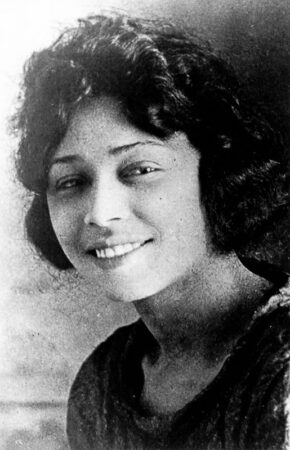
Harsh segregation policies and severe discrimination (e.g., Jim Crow laws) in the south coupled with a shortage of laborers resulted in a mass migration (“The Great Migration”) of about six million African Americans to urban centers across the Northeast, Midwest, and West Coast. Bessie’s move to Chicago in 1915 to be with her brothers turned into a life changing experience. While working at a barber shop as a manicurist, Bessie heard the aviation stories of pilots returning from France and the first world war. One of her heroes was Eugene Jacques Bullard (1895−1961), the first African American military pilot and the only American African American pilot to serve in the French air force during World War I. She was enamored and took a higher paying job to earn money to pay for flying lessons.
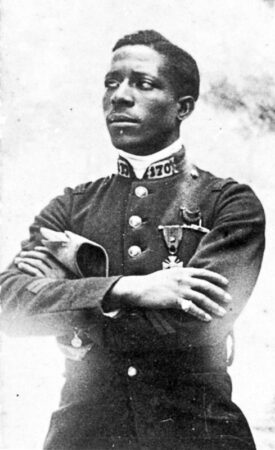
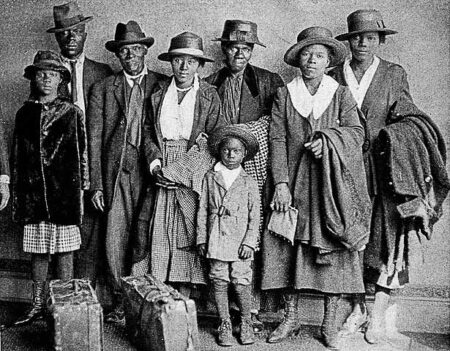
Unfortunately, Bessie found rejection at every American flight school she applied to because she was a woman and African American. She did not give up and turned to Robert Abbott (1870−1940), the publisher of the most widely circulated Black newspaper in America, The Chicago Defender. Abbott suggested to Bessie that she move to France where Jim Crow laws did not exist, and she would be able obtain training regardless of gender or race.
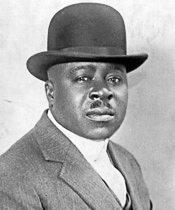
France and the Caudron Brothers
Bessie began to take French lessons since the applications had to be written in French. Accepted to the Caudron Brothers’ School of Aviation in Le Crotoy, France, Bessie moved to France on 20 November 1920. (Her financial sponsors included Abbott and a local Chicago banker.) Bessie quickly learned to fly in a Nieuport biplane. Bessie Coleman became the first African American woman (and Native American) to earn a pilot’s license when the Fédération Aéronautique Internationale issued her the aviation license in June 1921. For the next several months, Bessie stayed in France to hone her flying skills. Her next goal was to earn enough money to purchase an airplane and eventually start a flight school in America for aspiring pilots who happened to be Black and female.
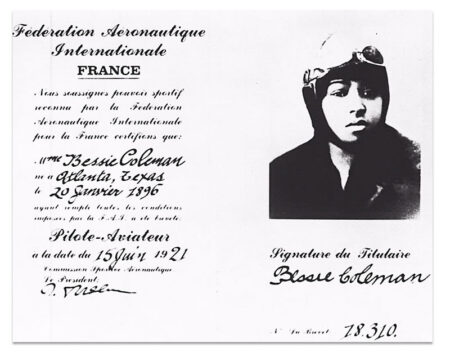
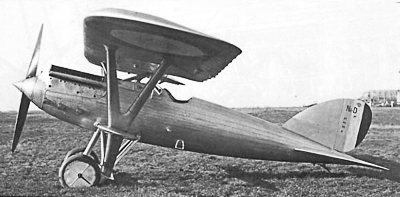
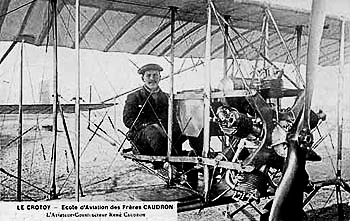
The Société des Avions Caudron was a French aircraft company founded in 1909 by two brothers, Gaston and René Caudron. The company produced planes used in both world wars. They established their factory in Le Crotoy because it had a broad and flat beach that was ideal for take-offs and landings. By 1910, the brothers had set-up a flying school that became so popular that a second school was established three years later in Juvisy-sur-Orge with a capacity for 250 students. Gaston Caudron (1882−1915) was killed in an aircraft accident on 15 December 1915. René Caudron (1884−1959) sold the company to Renault in 1933 and essentially retired in 1937 after selling his minority stake in the company. Today, the former Caudron-Renault operation is part of the Société Nationale de Construction aéronautique du Centre.
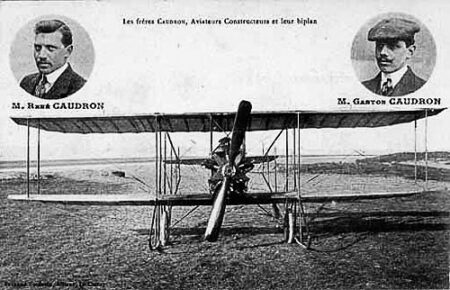
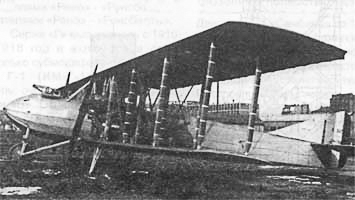
Returning to America and France Once More
Bessie returned to America as a celebrity (at least in the African American communities) in September 1921. All along, Abbott and his newspaper had been reporting on Bessie’s exploits and dubbed her “Queen Bess.” With the future of commercial aviation about ten years in the future, Bessie found the only way to make money was to become a stunt pilot and join the “barnstorming” circuit. Barnstorming required her to perform dangerous maneuvers, but Bessie realized she would need advanced training. While applying to American flight schools, Bessie gave speeches and lectures on flying to earn money. She refused any speaking engagement if the venue was segregated or discriminated against African Americans. But once again, her applications to American flight schools were rejected and Bessie returned to France in February 1922 where she completed advanced aviation courses. During her two months in Europe, Bessie met Anthony Fokker and received additional training from one of his chief pilots. By then, she decided to return to America and begin her exhibitions of spectacular and daredevil aerial stunts including parachuting from a plane.
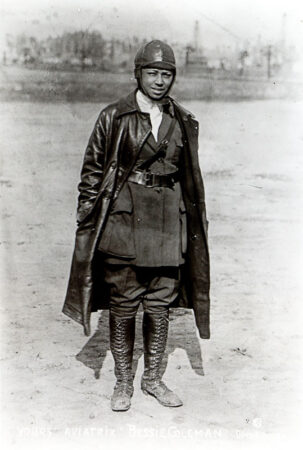
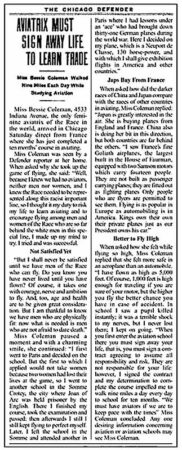
For the next four years, Bessie developed a stellar reputation and attracted crowds for her shows. During this time, her plane of choice was the Curtiss JN-4 (Jenny) biplane as there were many available as war surplus. Bessie’s first American show was on 3 September when she honored the all-black 369th Infantry Regiment. The show was sponsored by her friend, Robert Abbott. When Bessie’ shows took place in the south, especially Texas, she refused to perform unless the event was desegregated, and a single entrance was used for all customers. (Doesn’t this remind us of Josephine Baker? – An African American in Paris [click here to read the blog].) Back in the early days of aviation, the question wasn’t IF a pilot was going to have an accident, it was WHEN they would have an accident. Despite her skills, Bessie was no exception to this.
In February 1922 while performing in Los Angeles, Bessie’s plane malfunctioned and crashed. She suffered badly and sustained a broken leg, cracked ribs, and severe cuts to the face. Bessie recovered and in 1925 returned to her dangerous air tricks. By now, the young aviator had saved enough money to purchase a used Curtiss JN-4 airplane. Bessie returned to her hometown in Texas to perform and ran into the Jim Crow laws. She immediately stood up to the local segregation and won. (Just like Josephine Baker accomplished in Las Vegas.)
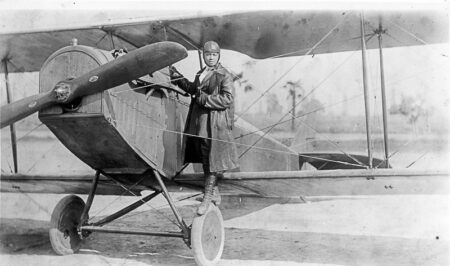
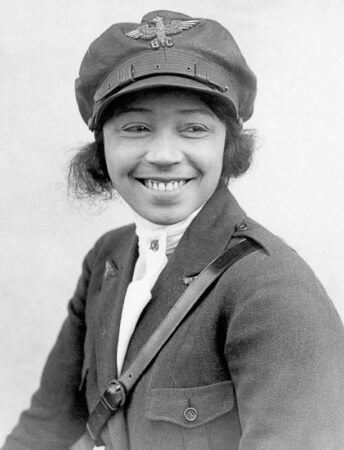
Tragedy
In April 1926, Bessie was in Jacksonville, Florida along with her recently purchased Curtiss JN-4 preparing for an airshow. Her mechanic, William Wills, had flown the plane from Texas but had to make three unscheduled stops due to mechanical issues. Arriving in Jacksonville, Wills and Bessie took off to survey the terrain for her parachute jump the next day. Wills was the pilot while Bessie, not wearing a seatbelt or parachute, leaned out to watch the ground. The plane suddenly went into a dive and a spin at 3,000 feet. Bessie was thrown out of the plane and died instantly upon hitting the ground. Unable to regain control, Wills died when the plane hit the ground and burst into flames. The aftermath of the accident determined a wrench used to work on the engine had fallen out of a bag and jammed the controls.
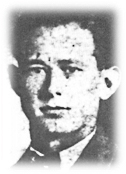
Bessie, age 34, was buried at the Lincoln Cemetery near Chicago with ten thousand mourners present. (Robert Abbott is also buried there.) Despite her celebrity, news of her death was never carried by mainstream media. The African American press covered her story in detail.
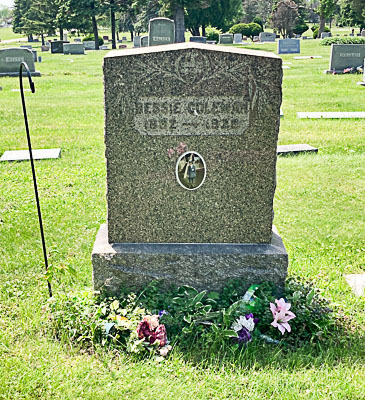
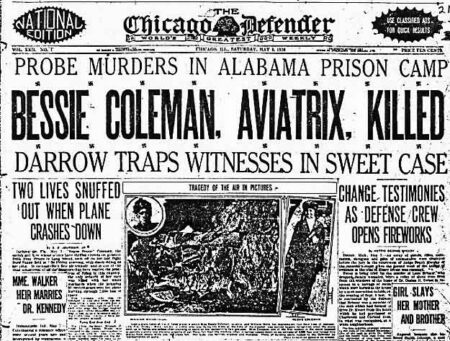
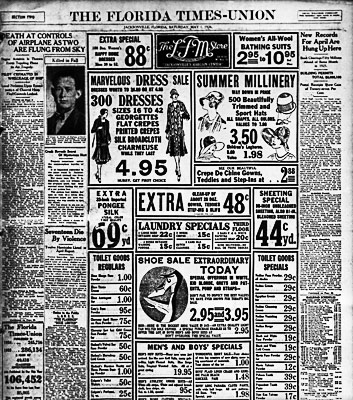

Bessie Coleman’s Legacy
Although Bessie’s goal of establishing an aviation school for minorities did not materialize, she became an inspiration for future African American aviators.
It’s tempting to draw parallels between me and Ms. Coleman . . . [but] I point to Bessie Coleman and say here is a woman, a being, who exemplifies and serves as a model for all humanity, the very definition of strength, dignity, courage, integrity, and beauty.
⏤ Mae Jemison
First African American woman astronaut to go into space.
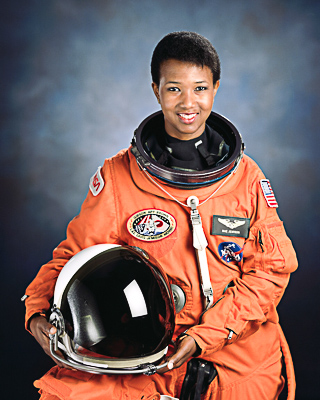
Because of Bessie Coleman, we have overcome that which is worse than racial barriers. We have overcome the barriers within ourselves and dared to dream.
⏤ Lieutenant William J. Powell
Black Wings (1934)
Founder of the Bessie Coleman Aero Club
The air is the only place free from prejudices.
⏤ Bessie Coleman
Despite the tremendous odds against her because of race and gender, Bessie persevered and followed her dream. She was not going to let what seemed to be insurmountable obstacles hinder her goal of achieving a pilot’s license and introduce aviation to other women and minorities. At the time, Amelia Earhart, the female aviator, was widely known throughout the country and world. Bessie on the other hand, was only known within the African American community. It took many decades but today, Bessie Coleman is celebrated by all for her remarkable achievements.
A public library branch in Chicago was named in honor of Bessie Coleman. The Regional History Museum in Atlanta, Texas displays a reproduction of Bessie’s biplane. Bessie Coleman was inducted in 2001 and 2006 to the National Women’s Hall of Fame and National Aviation Hall of Fame, respectively. In 1995, the U.S. Postal Service honored Bessie with a 32-cent stamp bearing her image. Numerous streets and schools have been named after her both in America and internationally.
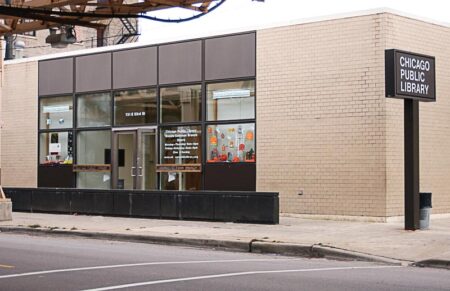
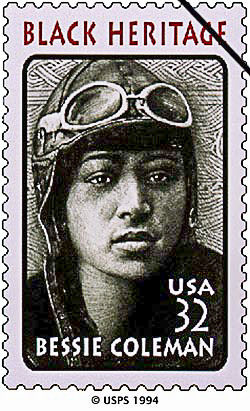
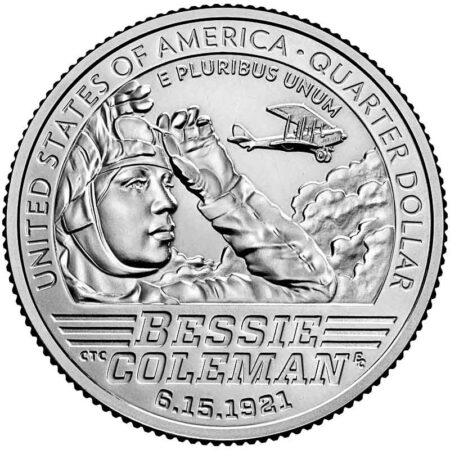
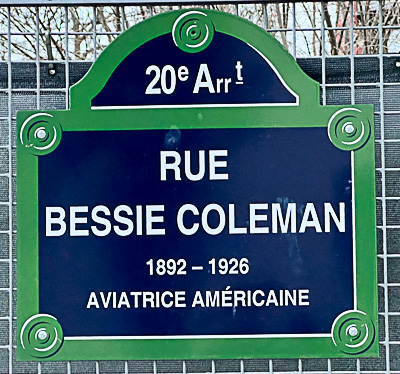
These are just a handful of honors and awards that Bessie Coleman earned on a posthumous basis. Like Mae Jemison and Azellia White, the first African American woman to earn a pilot’s license in Texas, there are so many others who cite Bessie’s influence as a reason for their life-long passion with aviation. And yes, there is even a Bessie Coleman Barbie Doll (as part of the “Inspiring Women” series by Mattel).
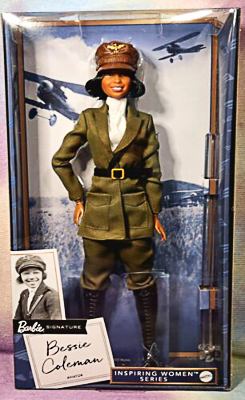
Next Blog: “Pardon me boy, is that the Chattanooga Choo Choo?”
Correspondence and Commentary Policy
We welcome everyone to contact us either directly or through the individual blogs. Sandy and I review every piece of correspondence before it is approved to be published on the blog site. Our policy is to accept and publish comments that do not project hate, political, religious stances, or an attempt to solicit business (yeah, believe it or not, we do get that kind of stuff). Like many bloggers, we receive quite a bit of what is considered “Spam.” Those e-mails are immediately rejected without discussion.
Our blogs are written to inform our readers about history. We want to ensure discussions are kept within the boundary of historical facts and context without personal bias or prejudice.
We average about one e-mail every two days from our readers. We appreciate all communication because in many cases, it has led to friendships around the world.
★ Read and Learn More About Today’s Topic ★
Fisher, Lillian M. Brave Bessie: Flying Free. Houston: Hendrick-Long Publishing Co., 1995.
Hart, Philip S. Up in the Air: The Story of Bessie Coleman (Trailblazer Biographies). Minneapolis: Carolrhoda Books (an imprint of Lerner Publishing Group), 1996.
Holway, John B. Bessie Coleman: Pioneering Black Woman Aviator. McLean, VA: Miniver Press, 2012.
Hopson, Carole. A Pair of Wings: A Novel Inspired by Pioneer Aviatrix Bessie Coleman. Philadelphia: Tursulowe Press, 2021.
Johnson, Dolores. She Dared to Fly: Bessie Coleman. New York: Benchmark Books (Biographies), 1997.
McCullough, David. Truman. New York: Simon & Schuster Paperbacks, 1992.
Official Bessie Coleman Website. Click here to visit the web-site.
Plantz, Connie. The Life of Bessie Coleman: First African American Woman Pilot. Berkeley Heights, NJ: Enslow Publishing, 2001.
Sharpley-Whiting, T. Denean. Bricktop’s Paris: African American Women in Paris between the Two World Wars. Albany: State University of New York Press, 2015.
Disclaimer:
There may be a chance that after we publish this particular blog, the video links associated with the blog are no longer accessible. We have no control over this. Many times, whoever posts the video has done so without the consent of the video’s owner. In some cases, it is likely that the content is deemed unsuitable by YouTube. We apologize if you have tried to access the link and you don’t get the expected results. Same goes for internet links.
What’s New With Sandy and Stew?
We would like to invite you to view the 45-minute on-line D-Day presentation I made to about fifty members of France Today on 6 June 2024. Presentations for France Today and Bonjour Paris are regularly taped and made available for their members who could not participate in real time. Non-members can always view the presentations for a small fee.
Sylvia at FranceMedia Group was kind enough to offer the “Double Cross System” presentation to our readers on a free basis for up to 30-days. The clock starts ticking on 20 July with the publication of this blog. The “Double Cross System” and its double agents earned the praise of Gen. Omar Bradley who called it “the greatest deception of the war.”
I hope you will have the time to take advantage of Sylvia’s offer.
My next presentation for Bonjour Paris will be on 30 October 2024 and the topic will be “Walks Through Curious Paris Cemeteries.” Just in time for Halloween.
Thank you to all of you who subscribe to our bi-weekly blogs. It seems there isn’t a day that goes by where we don’t increase our readership. Please let your history buff friends and family members know about our blog site and blogs.
Someone Is Commenting On Our Blogs
Thanks to Joe W. for contacting us regarding the blog, Find Johnny Nicholas! (Click here to read the blog.) It seems Joe has done quite a bit of research on Johnny and in particular, the massacre at Gardelegen. He was in touch with Lukkas Busche, director of the Gardelegen Memorial, and Mr. Busche told Joe about my books. Thanks, Joe, for purchasing the Gestapo book. I hope you enjoy the book as well as our past and future blogs.
I enjoyed Raymond K.’s comments on our recent blog, The Georgian Gestapo (click here to read the blog). I didn’t realize Alfred Rosenberg was born in Tallinn, a city that Sandy and I visited while on the Baltic cruise in May. Thanks Raymond and we always enjoy hearing from you.
If there is a topic you’d like to see a blog written about, please don’t hesitate to contact me. I love hearing from you so keep those comments coming.
Share This:
Follow Stew:
Find Stew’s books on Amazon and Apple Books.
Please contact Stew directly for purchase of books, Kindle available on Amazon. Stew.ross@Yooperpublications.com or Contact Stew on the Home Page.
Shepherd.com is like wandering the aisles of your favorite bookstore.
Do you enjoy reading? Do you have a hard time finding the right book in the genre you enjoy? Well, Ben at Shepherd.com has come up with an amazing way to find that book.
Shepherd highlights an author (like me) and one of their books. The author is required to review five books in the same genre. So, if a reader is interested say in cooking, they can drill down and find specific books about cooking that have been reviewed by authors in that category. Very simple.
If you like to read, I highly recommend you visit Shepherd.com. If you do, please let me know what you think and I will forward Ben any suggestions or comments you might have.
Click here to visit Shepherd’s website.
Click the books to visit Stew’s bookshelf on WWII.
Check out Stew’s bookshelf on the French Revolution.
Please note that we do not and will not take compensation from individuals or companies mentioned or promoted in the blogs.
 Walks Through History
Walks Through History
Copyright © 2024 Stew Ross

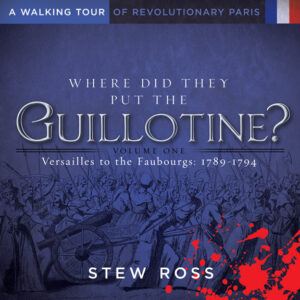
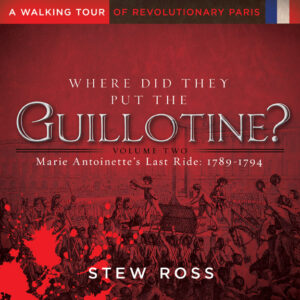


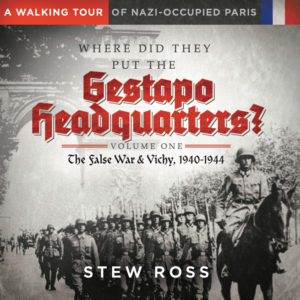



Thankyou for this wonderful story Stew. I’m really glad I took the time this morning to read it.